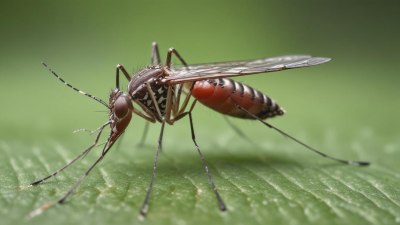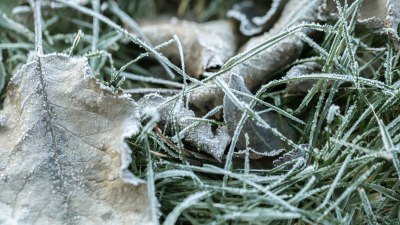Beat the Heat: 10 Cooling Tricks Your AC Repairman Doesn't Want You to Know
Discover 10 expert cooling tips to lower your home temperature efficiently and save on AC costs this summer.

Image by ahmedrazasyed622 on Freepik
As the temperature rises, keeping your home cool becomes a top priority. While air conditioning units are the standard go-to for beating the heat, there are many lesser-known tricks that can help you stay comfortable without relying solely on your AC. These cooling strategies not only improve comfort but can also lower your energy bills. Surprisingly, some of these tips are things your AC repairman might not emphasize, as they could reduce the need for frequent repairs or replacements.
In this article, we will explore 10 effective cooling tricks that can help you stay cool, save energy, and extend your AC system’s life.
1. Use Fans Wisely to Complement Your AC
Ceiling and portable fans don't actually lower room temperature but they create a wind-chill effect, making your skin feel cooler. Strategically using fans in conjunction with your AC unit allows you to raise the thermostat setting by a few degrees without sacrificing comfort, which can lead to significant energy savings. For best results, ensure ceiling fans rotate counterclockwise in summer to push air downwards, providing a cooling breeze.
2. Block Out Heat with Window Treatments
Up to 30% of unwanted heat enters your home through windows. Installing blackout curtains, thermal shades, or reflective window films can drastically reduce heat gain from sunlight. Close your curtains during the hottest parts of the day to prevent solar heat from increasing indoor temperatures, which lessens AC workload and energy consumption.
3. Optimize Thermostat Settings and Use a Programmable Thermostat
Setting your thermostat to a higher temperature when you're not home can save energy. Programmable thermostats enable you to automate temperature adjustments, lowering AC use during the day and cooling your home before you return. Even setting the thermostat to 78°F (25.5°C) when at home offers comfortable cooling while reducing energy bills. Avoid setting your thermostat lower than necessary; it won’t cool your home faster and wastes energy.
4. Maintain Your AC Unit Regularly
Your AC repairman might not emphasize regular upkeep, but maintenance is critical. Changing or cleaning air filters every 1-3 months helps the system run efficiently. Dirty filters restrict airflow, forcing the AC to work harder and increasing the chances of breakdowns. Also, cleaning coils and checking refrigerant levels maintain optimal cooling performance. Schedule professional inspections annually to catch potential issues early.
5. Seal Air Leaks and Improve Insulation
Unsealed windows, doors, and ducts let cool air escape and warm air infiltrate, forcing your AC to compensate. Weather-stripping doors, caulking windows, and insulating attic spaces can dramatically improve your home's energy efficiency. Inspect for leaks around vents and ensure ducts are properly sealed. These fixes reduce strain on your air conditioning system and create a consistent indoor climate.
6. Use a Dehumidifier to Improve Perceived Comfort
Humidity makes hot temperatures feel more uncomfortable by increasing the heat index. Dehumidifiers remove excess moisture from the air, making indoor temperatures feel cooler without necessarily lowering the thermostat. This can reduce the load on your AC unit since dry air feels less oppressive, enabling you to set the temperature a few degrees higher.
7. Create Cross-Ventilation When Outdoor Temperatures Drop
During cooler mornings or evenings, open windows and use fans to create a cross-breeze, flushing out hot indoor air and letting cooler outside air in. This natural ventilation can reduce your reliance on the AC unit during off-peak hours. Remember to close all windows once outdoor temperatures rise to prevent heat gain.
8. Utilize Heat-Reducing Landscaping
Planting shade trees and shrubs near windows and air conditioning units can block direct sunlight and lower surrounding air temperatures. Trees act as natural air conditioners by providing shade and releasing moisture through transpiration. Smart landscaping can reduce the amount of heat your home absorbs, easing the demand on your air conditioning system.
9. Avoid Heat-Generating Activities During Peak Hours
Activities like cooking with the oven, running the dishwasher, or using incandescent lights generate heat inside the house, making your AC work harder. Try to schedule these tasks during early morning or late evening when it is cooler outside or opt for microwave and outdoor grilling to minimize heat indoors. Switching to energy-efficient lighting like LEDs also reduces indoor heat emission.
10. Upgrade to Energy-Efficient Appliances and AC Models
If your AC unit is old or inefficient, consider upgrading to a high-efficiency model certified by ENERGY STAR. Modern air conditioners consume less energy and cool more effectively. Additionally, installing energy-efficient appliances reduces overall indoor heat production. Although this represents an upfront expense, the long-term energy savings and improved comfort make it worthwhile.
Implementing these 10 cooling tricks can help you maintain a cooler home environment while reducing wear and tear on your air conditioning system. By combining smart usage, maintenance, and home improvements, you can beat the heat without over-reliance on your AC, resulting in energy savings and fewer repair visits.
Many of these strategies are often overlooked or lightly mentioned by service professionals because they want you to rely more heavily on the AC system itself. Using these tips empowers you to control your indoor climate efficiently and cost-effectively during the scorching summer months.
Take advantage of fan usage, window treatments, and smart thermostat programming to reduce cooling demand. Complement these with maintenance, sealing, and humidity control for an all-round approach. Finally, consider landscaping and behavior adjustments to minimize heat gain and generation inside your home.
These simple yet powerful methods can dramatically improve your home’s cooling performance and comfort this season.











